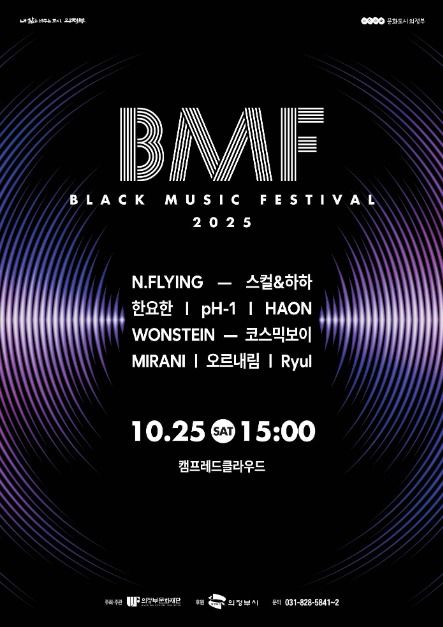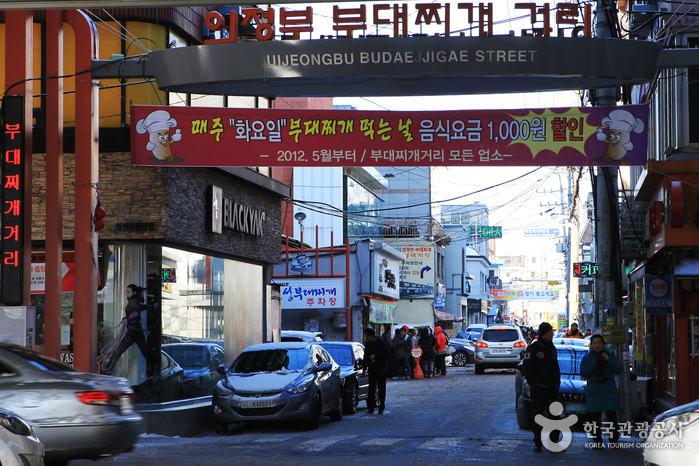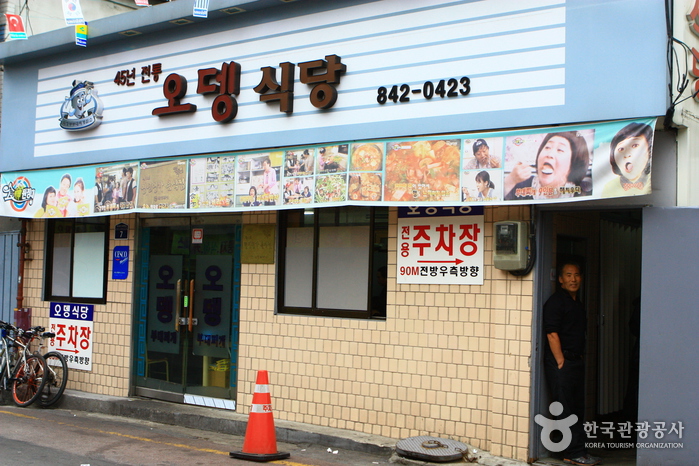Olive Young - Uijeongbu Geumo Branch [Tax Refund Shop] (올리브영 의정부금오점)
16.4Km 2024-06-27
#103~4, #202~3, 41, Cheongsa-ro, Uijeongbu-si, Gyeonggi-do
-
Olive Young - Uijeongbu Millak Branch [Tax Refund Shop] (올리브영 의정부민락)
16.5Km 2024-04-22
Store #110, #111, Haedong Tower 2, 56, Cheonbo-ro, Uijeongbu-si, Gyeonggi-do
-
E-Mart - Uijeongbu Branch [Tax Refund Shop] (이마트 의정부)
16.6Km 2024-04-22
210, Millak-ro, Uijeongbu-si, Gyeonggi-do
-
OffLabel - Uijeongbu Millak Branch [Tax Refund Shop] (오프라벨 의정부민락)
16.6Km 2024-04-22
124, Singomae-ro, Giheung-gu, Yongin-si, Gyeonggi-do
-
Gamaksan Mountain (Paju) [감악산(파주)]
16.6Km 2024-02-29
48, Gamgol-gil, Jeokseong-myeon, Paju-si, Gyeonggi-do
+82-31-940-4612
Gamaksan Mountain is popular for its easy-to-climb trails and beautiful scenery. It is home to a suspension bridge 150 m in length, Beomnyunsa Temple, and Ungyepokpo Falls. Paju’s city center can be seen from the summit at a glance. On clear days, one can even see the area around the Military Demarcation Line beyond Imjingang River to the north.
Black Music Festival (BMF) (2025 제7회 BMF(블랙뮤직페스티벌))
17.5Km 2025-10-23
Ganeung-dong, Uijeongbu-si, Gyeonggi-do
+82-31-828-5841
The Black Music Festival feature performances across various genres, including hip hop, R&B, soul form both local artists and international artists. Along with performances, visitors can enjoy various cultural events and hands-on experience programs.
Gamaksan Suspension Bridge (감악산 출렁다리)
17.7Km 2024-11-26
238 Seolmacheon-ro, Jeokseong-myeon, Paju-si, Gyeonggi-do
Gamaksan is one of five great mountains of the Gyeonggi region, and according to legend, its name means a dark blue-colored rocky mountain whose rocks emanated black and blue lights at the same time. The suspension bridge located at the starting point of the Gamaksan Trail connects Seolmari Valley, which had been severed by a road, to make Gamaksan into a single mountain again. It is 150 meters long, which makes it the nation's longest bridge tower-less suspension bridge, and was constructed to form harmony with nature.
Gamaksan boasts small but beautiful valleys around Seolmacheon Stream as well as Ungyepokpo Falls where the waterfalls are nearly vertical so it is used for ice wall training in the wintertime. Gamaksan Stele sits at the top and, just underneath Janggunbong Peak lies Imkkeokjeonggul Cave where Im kkeokjeong is known to have hidden away from the pursuit of the government army. Gamaksan is close to the ceasefire line so, once you climb up to the peak, you will be able to see the Imjingang River and Songaksan Mountain in Gaesong. Fresh scents of pine trees and soil on the trails and mountain ridges attract countless climbers.
Uijeongbu Curling Stadium(의정부 컬링경기장)
17.7Km 2023-12-22
136, Cheyuk-ro, Uijeongbu-si, Gyeonggi-do
Curling is one of the most well-known winter sports. Uijeongbu Curling Stadium has a curling sheet built according to international standards, so it is often used by athletes, both domestic and international. The stadium is also notable for being open to the general public, so everyone can try curling or even take part in practice matches. Shoes, protective equipment, and stones are available for use.
The “Uijeongbu City Tour,” operated by the city of Uijeongbu, takes you around the city's major tourist attractions and includes a curling experience at the Uijeongbu Curling Stadium. The tour allows you to take a course on curling, then practice what you’ve learned through an experience program.
Uijeongbu Budaejjigae Street (의정부 부대찌개거리)
17.9Km 2023-10-27
7, Hoguk-ro 1309beon-gil, Uijeongbu-si, Gyeonggi-do
The word “budaejjigae” has two parts: “budae”, or military unit, and “jjigae,” a dish made by boiling ingredients and stock in a pot. It originates from the post-Korean War period, where processed meat from US Army bases was made into a jjigae with vegetables, glass noodles, ramyeon, and the like. While the exact origin of the dish is difficult to establish, a strong tradition of sausage jjigae was established in Uijeongbu, thanks to its proximity to US Army bases. These geographical characteristics created today’s Uijeongbu Budaejjigae Street. Starting with Odeng Sikdang, the origin of the street, restaurants specializing in sausage jjigae entered the area, creating a specialized street and a landmark of Uijeongbu.
Odeng Sikdang Uijeongbu Main Branch (오뎅식당)
18.0Km 2024-12-06
7, Hoguk-ro 1309beon-gil, Uijeongbu-si, Gyeonggi-do
+82-31-842-0423
The origins of Uijeongbu’s budaejjigae (Sausage Jjigae) tradition trace back to a humble food stall, now operated by the third generation. As budaejjigae grew in popularity, this modest stall evolved into a dedicated restaurant specializing in the iconic dish.

![Olive Young - Uijeongbu Millak Branch [Tax Refund Shop] (올리브영 의정부민락)](http://tong.visitkorea.or.kr/cms/resource/42/2881342_image2_1.jpg)
![E-Mart - Uijeongbu Branch [Tax Refund Shop] (이마트 의정부)](http://tong.visitkorea.or.kr/cms/resource/48/2881348_image2_1.jpg)
![OffLabel - Uijeongbu Millak Branch [Tax Refund Shop] (오프라벨 의정부민락)](http://tong.visitkorea.or.kr/cms/resource/45/2881345_image2_1.jpg)




 English
English
 한국어
한국어 日本語
日本語 中文(简体)
中文(简体) Deutsch
Deutsch Français
Français Español
Español Русский
Русский